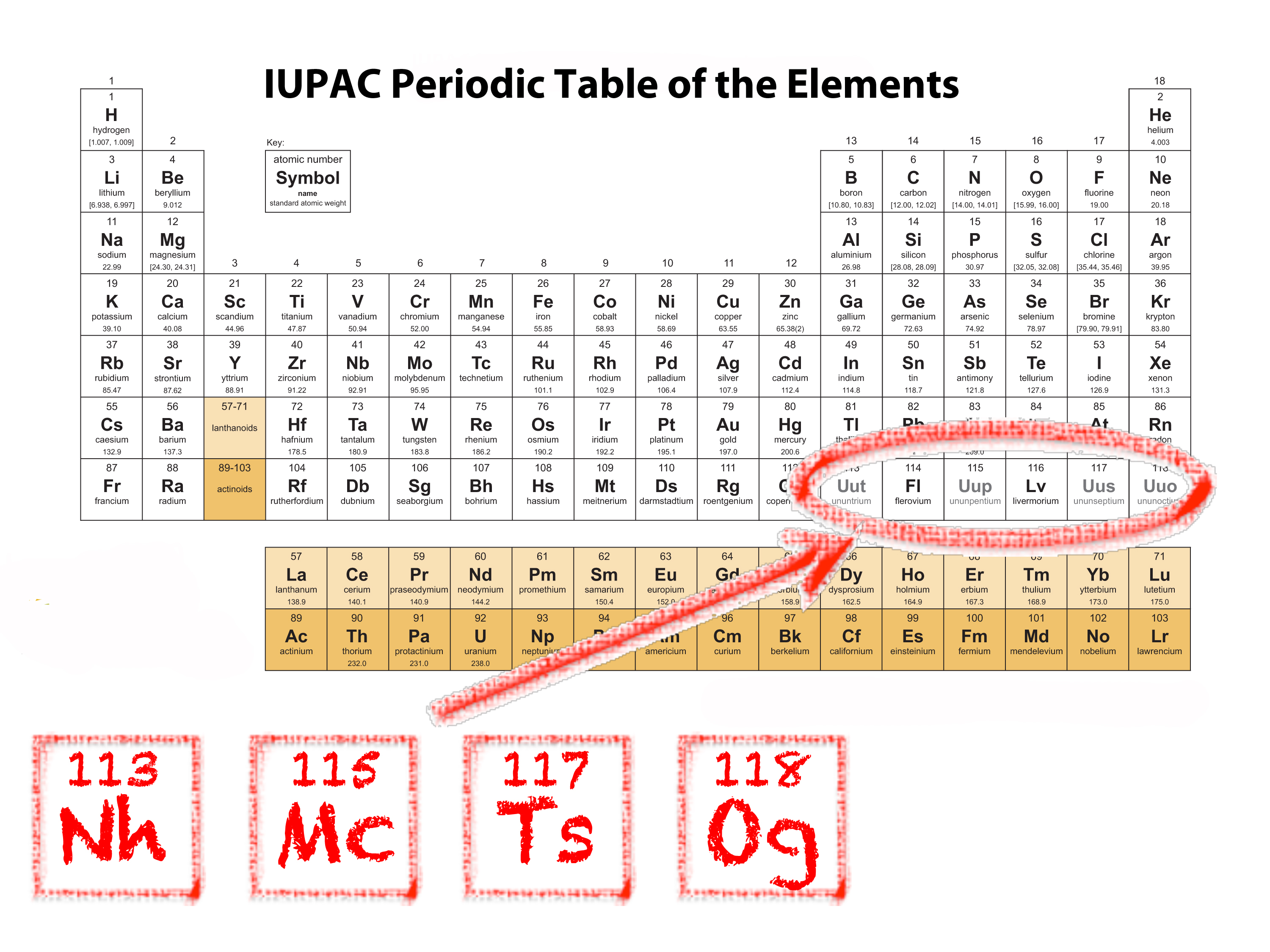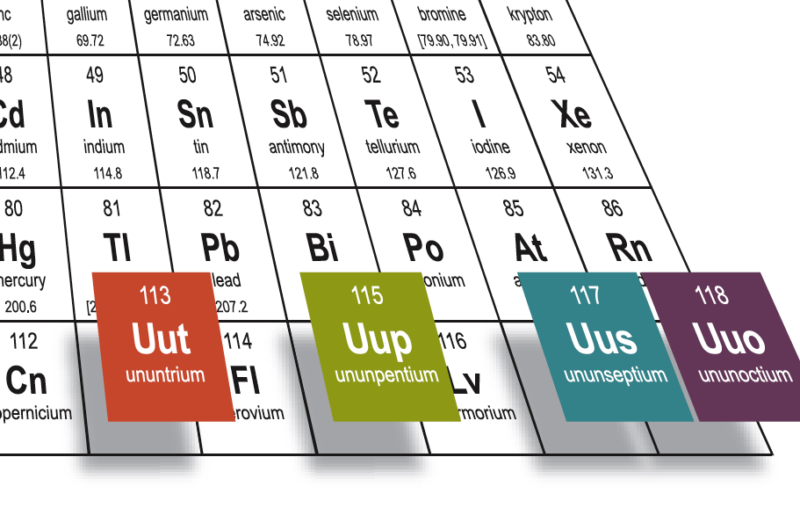It’s time to update your copy of the periodic table. Four new elements discovered in recent years have now been named, pending final approval by the international group of scientists in charge of the table.
The International Union of Pure and Applied Chemistry has announced these proposed names:
- Nihonium and symbol Nh, for the element 113
- Moscovium and symbol Mc, for the element 115
- Tennessine and symbol Ts, for the element 117
- Oganesson and symbol Og, for the element 118
The new superheavy, radioactive elements were actually added to the periodic table late last year and given these temporary and unremarkable names: ununtrium, ununpentium, ununseptium and ununoctoium.
But the IUPAC lets the discoverers of an element submit permanent names. Rules say they have to fall into one of five categories — a new element can be named after a mythological concept or character, a mineral or substance, a place or geographic region, a property of the element, or a scientist.

That’s how we get nihonium, discovered by scientists at the RIKEN Nishina Center for Accelerator-Based Science in Japan. IUPAC says Nihon is one of two ways to say “Japan” in Japanese, and that element 113 is the first to have been discovered in an Asian country.

9(MDAxOTAwOTE4MDEyMTkxMDAzNjczZDljZA004))